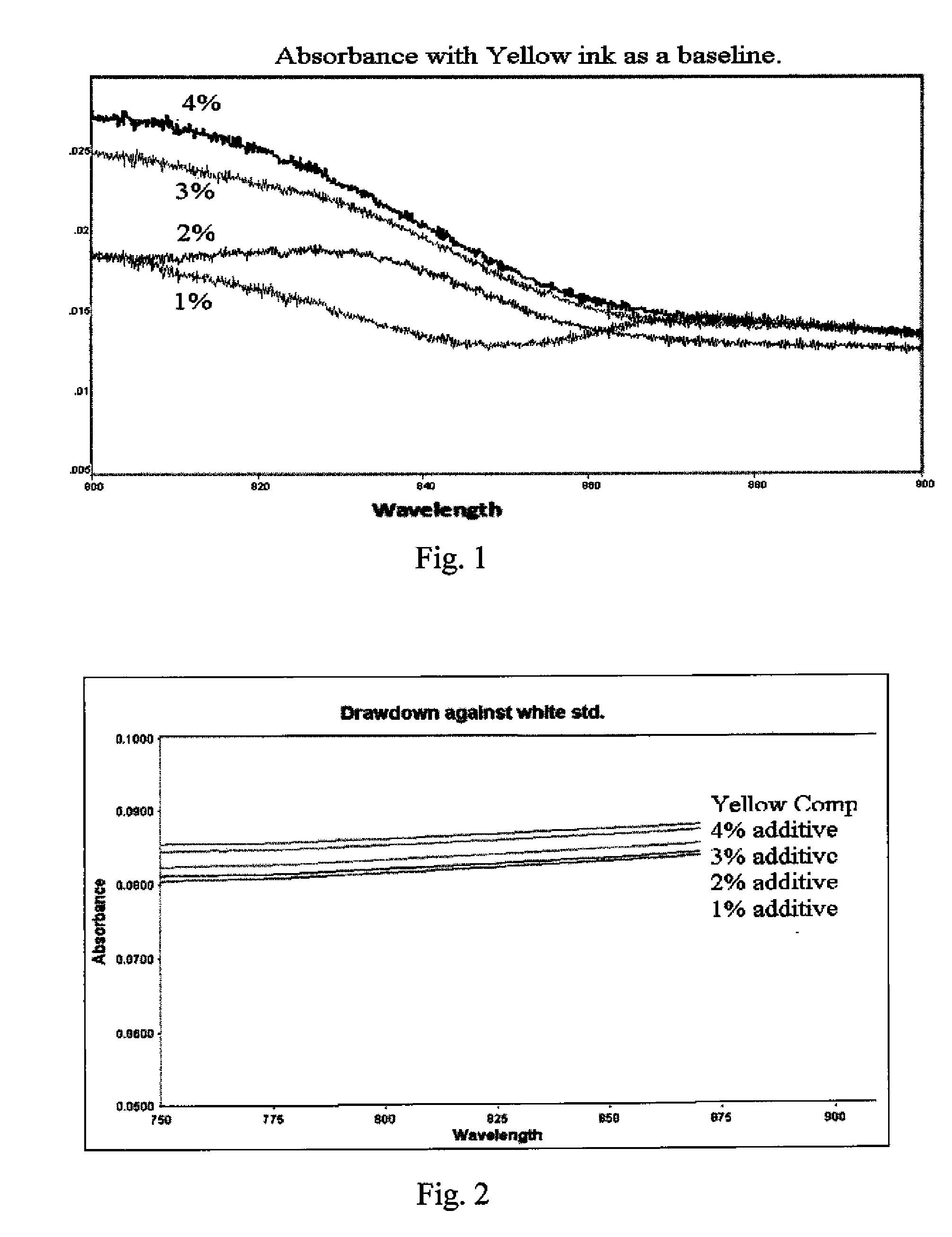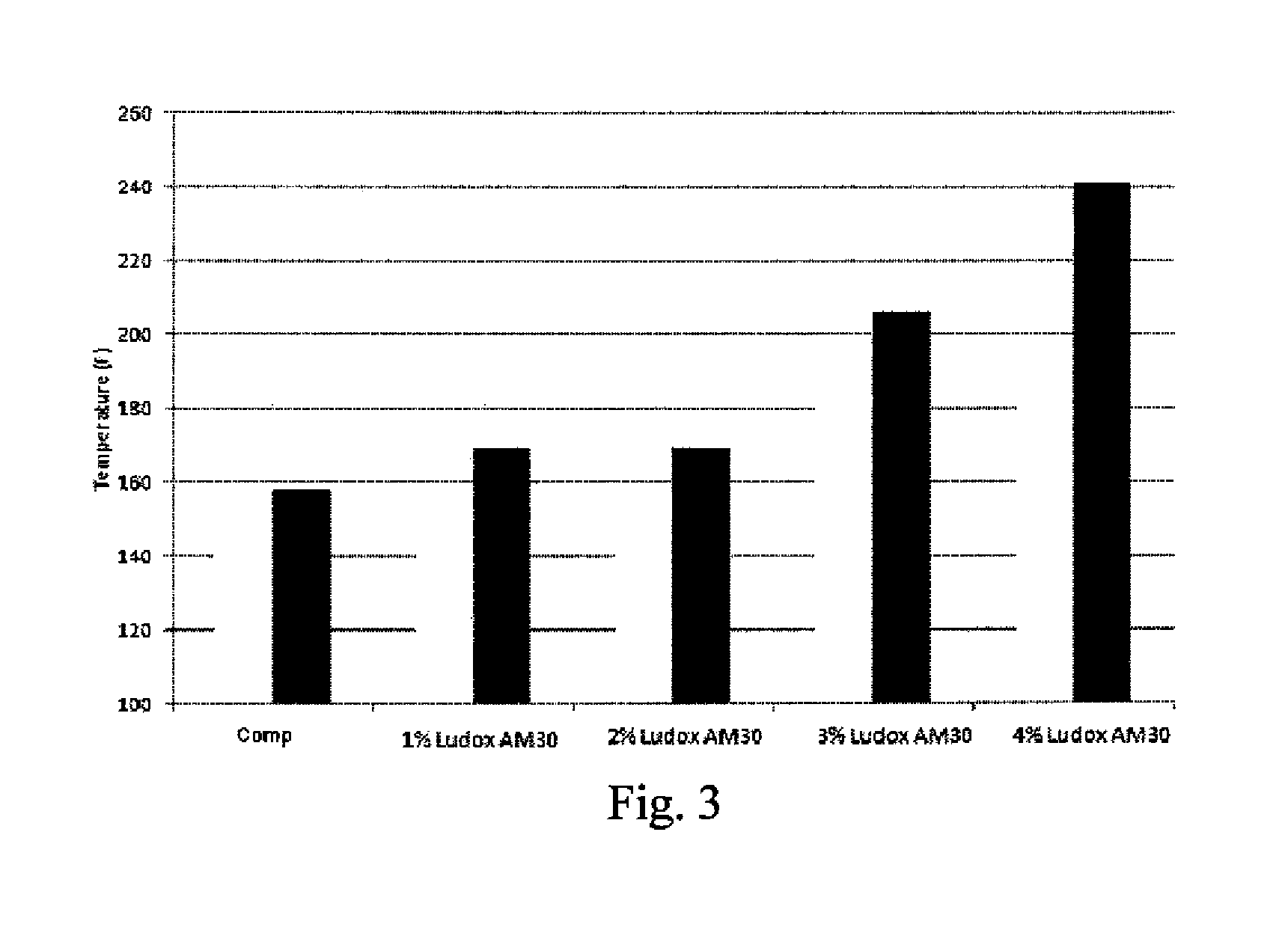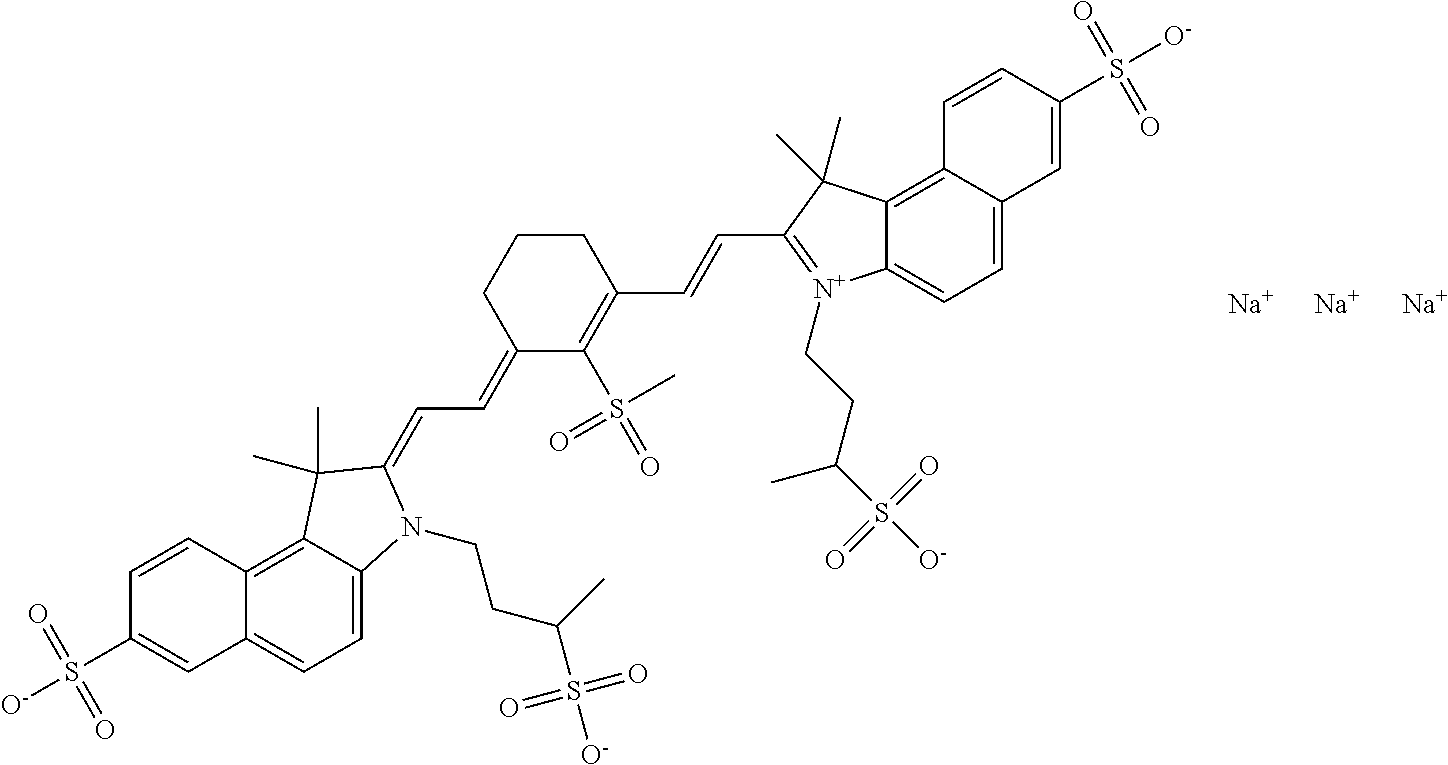Inkjet printing process
- Summary
- Abstract
- Description
- Claims
- Application Information
AI Technical Summary
Benefits of technology
Problems solved by technology
Method used
Image
Examples
example 1
[0052]Yellow pigment dispersion YD-1—To a 10-gallon stainless steel mixing vessel was added 2,560 g water and 2,400 g of a 15% solution of KOH-neutralized dispersant terpolymer, prepared from benzyl methacrylate, stearyl methacrylate, and methacrylic acid at the feed ratio of 37:30:33 by weight, and having an average MW of 8,700 (polymer P-1). Mixing was initiated using a ring-style disperser impeller. Pigment Yellow 74 (Sun Chemical) (1,200 g) was added to the fluid. Milling media comprising beads of polystyrene resin was added slowly while increasing impeller speed, and the mixture was milled for about 20 hours. The dispersion / media mixture was further diluted with water (5,940 g) and biocide KORDEK MLX (Rohm and Haas Co.) (60 g) to a final pigment concentration of about 10%, and the milling media filtered off. A final filtration through a 0.3-micrometer Pall Corp. PROFILE II depth filter yielded roughly 10.6 kg of dispersion. The dispersion had a median particle size of 80 nanome...
example 2
[0057]Coatings of yellow inks YI-1 through YI-5 were made on STERLING ULTRAGLOSS paper using a drawdown apparatus #3 wire-bound rod, and dried. The spectra of the dried inks are shown in FIG. 2. Once dried, there is virtually no increased absorption for the inks containing the colloidal silica additive compared to the comparative yellow ink. The transparency of the dried silica to near-IR in the dried inks allows the bottom of the ink coating to receive full exposure to the radiation. Only the wet ink, containing the Si—OH functionality, absorbs in the near-IR as shown in FIG. 1.
example 3
[0058]Draw-down coatings of yellow inks YI-1 through YI-5 were prepared as in Example 2, placed on a conveyor belt and passed under a near-IR drying system at such a rate (8 in / sec) that the coating did not completely dry. The temperature of the semi-wet coating was measured upon exiting the near-IR drying system. The coating needed to remain wet and contain the Si—OH absorbing functionality to observe the temperature increase since dried coatings transmit radiation and cool rapidly. FIG. 3 shows the temperature increase of semi-wet coatings of 0-4% silica containing yellow inks after exposure to near-IR radiation and upon exiting the drying system.
[0059]The FIG. 1 near-IR solution spectra and FIG. 3 drying experiment results show that the addition of nanoparticulate colloidal silica results in an increased absorption of near-IR radiation and that this energy is converted to thermal energy. The addenda is small enough to not affect gloss and does not affect the ink in a detrimental ...
PUM
 Login to view more
Login to view more Abstract
Description
Claims
Application Information
 Login to view more
Login to view more - R&D Engineer
- R&D Manager
- IP Professional
- Industry Leading Data Capabilities
- Powerful AI technology
- Patent DNA Extraction
Browse by: Latest US Patents, China's latest patents, Technical Efficacy Thesaurus, Application Domain, Technology Topic.
© 2024 PatSnap. All rights reserved.Legal|Privacy policy|Modern Slavery Act Transparency Statement|Sitemap



